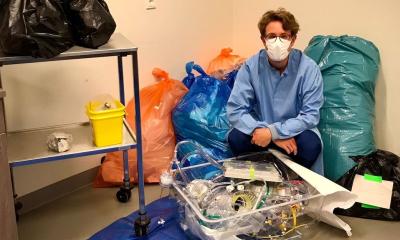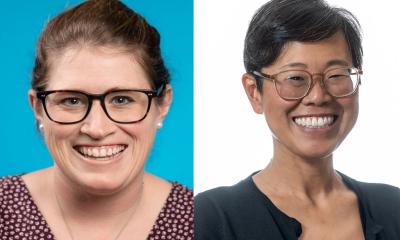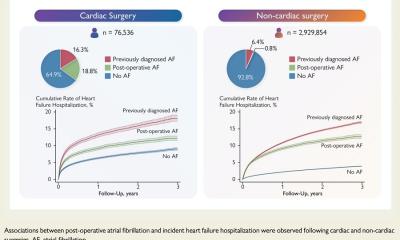News • A map to the heart
The meaning of heart geometry in surgery
Geometry is often referenced for matters of the heart. Marriage has been described as “two parallel lines,” and others have compared love to an “irrational equation” or as unending as “pi.” But when it comes to the medical matters of the heart, geometry can be a lonely and dangerous affair.
“The shape and size of a heart is not the same for every person, and a diseased heart, such as ischemia heart failure, is different than a healthy heart,” explains Dr. Chung-Hao Lee, an assistant professor in the Biomechanics and Biomaterials Design Laboratory in the University of Oklahoma’s School of Aerospace and Mechanical Engineering. “So, when it is necessary to do surgery on the heart, it important to map out the individual’s particular geometry to know how it will respond to different surgical treatment options.”

Lee’s recent research is focused on a predictive surgery for a serious heart condition called Functional Tricuspid Regurgitation, which affects approximately 1.6 million Americans. FTR is typically caused when the left side of the heart fails, causing the right side to expand and a geometric distortion of the heart. The distortion can lead to reverse blood flow, poor functioning of the heart valves, or worse, heart failure on the right side. Long-term surgical outcomes to repair FTR have a 20 percent moderate to severe recurrence rate by 10 years after initial surgery. Also, up to 40 percent of patients who have cardiac surgery require additional surgery within five years due to the individual’s heart characteristics. This results in more open-heart repeat surgeries and significant increases in risk and mortality.
If we can predict how a distinct heart will function under different surgical scenarios, we can help surgeon select the best approach to the surgery
Chung-Hao Lee
Lee and his team are developing a predictive modeling tool for individual-optimized heart valve surgical repair. The customized analysis will be a surgical planning tool for the treatment of that patient. Lee’s team uses to a combination of clinical image data, such as functional magnetic resonance imaging and clinical computed tomography, to reconstruct a 3D computational model of the heart. Lee’s model would guide surgeons on the best approach to repair FTR in a particular patient, reducing the risk of reoccurrence. “Often, surgeons may have several options on how to repair a heart,” Lee said. “They may try to manipulate the geometry of the heart or valves or change the size of each individual apparatus. We can simulate those surgical scenarios, one by one, to know the individual-optimized therapeutic option.” The right approach can improve the durability of the repair. “We are now entering a level of knowledge and technical capability where computational modeling can deliver precision medicine,” Lee said. “If we can predict how a distinct heart will function under different surgical scenarios, we can help surgeon select the best approach to the surgery.”
Source: University of Oklahoma, Gallogly College of Engineering
15.02.2018











